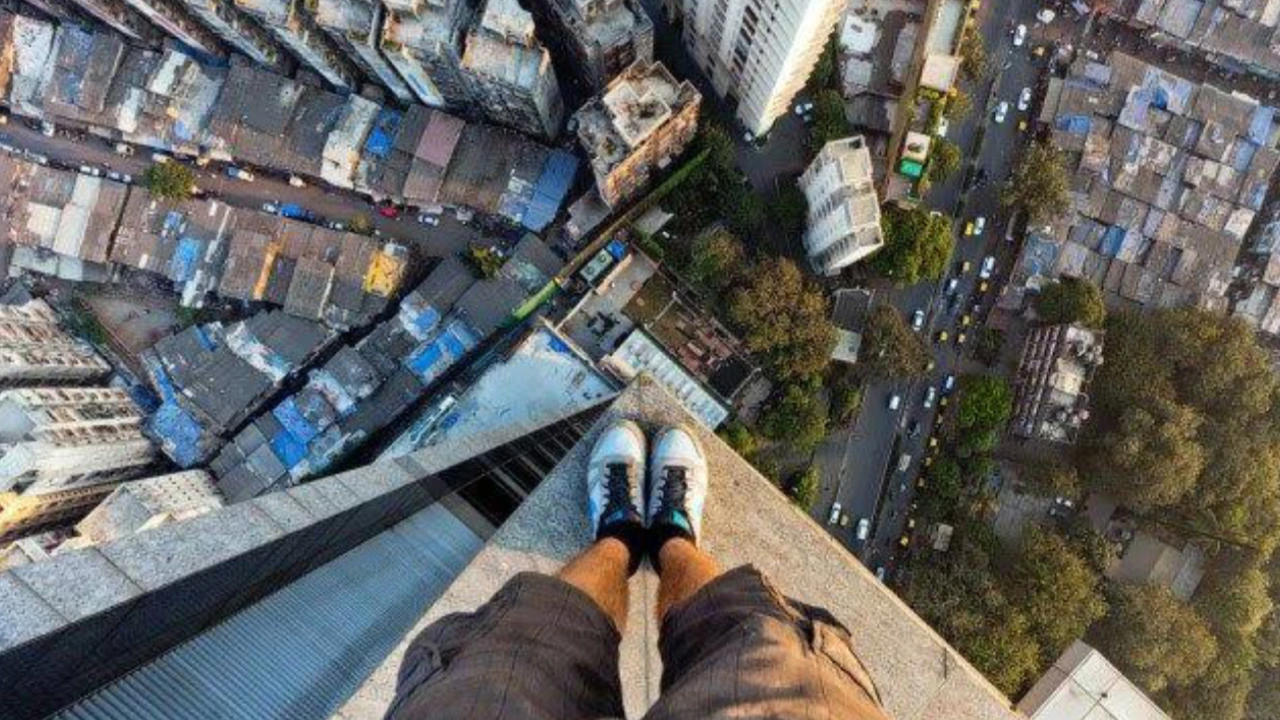Acrophobia is an irrational fear of heights. Acrophobia sufferers can feel anxious, trembling, dizzy, even short of breath when they are in high places. If left untreated, acrophobia can interfere with the sufferer’s daily activities.
Feeling afraid at heights is a normal thing that happens to some people. This makes them be more careful not to fall. However, in acrophobia sufferers , fear still appears even though the situation does not actually harm him.
In severe conditions, acrophobia sufferers can feel anxious when they realize that they are several meters above the ground, for example in the middle of the stairs. This condition can also make sufferers avoid activities, including social interactions, held at heights.
Causes of Acrophobia
The cause of acrophobia has not been determined. However, this condition can generally appear as a result of the following factors:
- Ever experienced a traumatic event, such as falling or seeing someone else fall from a high place
- Having a family that is also phobic of heights or suffers from anxiety disorders
- Ever experienced something unpleasant, such as a panic attack , when being at a height
- Get used to seeing the behavior of the closest people who are afraid of heights
The types of heights that can make people with acrophobia experience excessive fear are:
- Tall building
- Stairs or escalators
- Multi-level parking
- Rock climbing board
- Rollercoaster game
- Bridge
- Overpass
- House with big windows on the top floor
- Airplanes (aerophobia)
Symptoms of Acrophobia
Symptoms of acrophobia can arise every time the sufferer thinks, sees, or is in a high place. Common complaints and symptoms are:
- Excessive anxiety, fear, and panic
- Sweat a lot
- Chest pain
- Shortness of breath
- Heart pounding
- Trembling
- Dry mouth
- Nausea and vomiting
- Numbness or tingling in the hands, feet, or lips
- Lost balance
- Dizziness like fainting
When in a high place, people with acrophobia will generally immediately look for something to hold on to, kneel, squat, or crawl. He did this even though the situation did not threaten him.
In addition, acrophobia sufferers will avoid situations that require them to be in high places, for example boarding a plane, taking an elevator, staying on the top floor of a hotel, or fixing a lamp whose location must be reached by stairs.
When should you go to the doctor?
Immediately check with a doctor if you experience the symptoms mentioned above, especially if the fear experienced has reduced the quality of life and interfered with productivity.
Diagnosis of Acrophobia
The doctor will diagnose acropobia by asking about the symptoms that appear, the health history of the patient and his family, as well as traumatic experiences related to heights.
After that, the doctor will perform a comprehensive physical examination to find out if the patient’s symptoms are caused by a specific physical illness.
To diagnose height phobia, doctors will use the Diagnostic and Statistical Manual of Mental Disorders (DSM-5). A person can be said to have acrophobia if they have the following criteria:
- Experiencing an unreasonable fear of heights even though the situation is not self-threatening
- Experiencing anxiety when imagining or thinking about situations in high places that do not necessarily happen
- Avoid activities in high places
- Having difficulty doing daily activities due to height phobia
Patients can be diagnosed with acrophobia if they experience the above symptoms for at least 6 months or more.
Treatment of Acrophobia
Acrophobia treatment aims to relieve fear and anxiety, as well as teach patients how to control themselves well when thinking about or facing the feared situation. Here are some treatment methods that can be done:
Display therapy
Exposure therapy is usually the main treatment for acrophobia. In this therapy, a therapist will show pictures from the point of view of people inside a tall building.
Patients may also be asked to watch videos of people crossing ropes or bridges, and climbing stairs. That way, the patient is expected to be able to master relaxation techniques to face and control the fear of heights that he experiences.
Cognitive behavioral therapy
Cognitive behavioral therapy is done by teaching the patient to face or divert negative thoughts about height. The purpose is to make the patient braver and think positively about objects or situations related to height.
Medicines
In addition to therapy, doctors can prescribe drugs to overcome symptoms or complaints that appear. Medicines used include:
- Beta blockers, to keep blood pressure stable and slow heart rate when anxious
- Benzodiazepine, to reduce anxiety symptoms, but only for a short period of time
It should be remembered that the consumption of the above medicines must be according to the doctor’s prescription. Avoid increasing or decreasing the dose of medicine without first consulting a doctor.
Complications of Acrophobia
Severe and untreated acrophobia can make the sufferer always afraid, anxious, and panic when thinking, seeing, or being in high places.
Acrophobia can cause sufferers to experience a decrease in quality of life because they always avoid activities involving heights. In addition, sufferers can suffer injuries due to falling if the symptoms of acrophobia arise when they are in a high place.
if left untreated, acrophobia can also cause complications, such as depression and anxiety disorders.
Prevention of Acrophobia
Acrophobia is difficult to prevent, because the cause is not yet known. However, there are several efforts that can be made to reduce the fear and anxiety that appear due to heights, namely:
Acrophobia is difficult to prevent, because the cause is not yet known. However, there are several efforts that can be made to reduce the fear and anxiety that appear due to heights, namely:
- Slowly practice seeing or being at a height, for example by practicing walking up the stairs slowly while looking down at the floor below
- Asking for help from family or friends to help overcome the fear of heights, for example asking to be escorted to drive over the overpass
- Consume complete and balanced nutritious food
- Get enough rest and sleep
- Avoid consumption of caffeinated beverages
- Exercise regularly
References :
Maravalhas, V., et al. (2021). Virtual Reality in the Treatment of Acrophobia. World Conference on Information Systems and Technologies, Cham: Springer International Publishing, pp. 555–564.Huppert, D., Wuehr, M., & Brandt, T. (2020). Acrophobia and Visual Height Intolerance: Advances in Epidemiology and Mechanisms. Journal of Neurology, 267(Suppl 1), pp. 231–240.Cleveland Clinic (2023). Diseases & Conditions. Acrophobia (Fear of Heights).Mayo Clinic (2023). Diseases & Conditions. Specific Phobias.Healthline (2019). Understanding Acrophobia, or Fear of Heights.Verywell Mind (2022). Acrophobia: The Fear of Heights.Verywell Mind (2021). What is Acrophobia?

